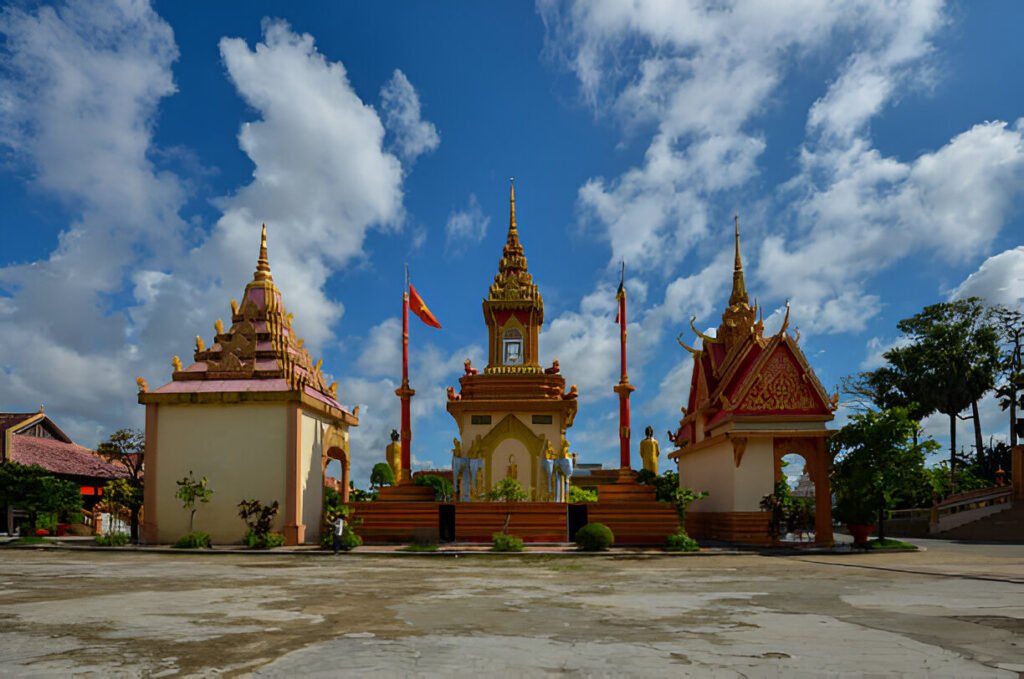Introduction:
Nestled in the heart and soul of Cambodia is the largest freshwater lake in Southeast Asia, the Tonlé Sap Lake. This aquatic gem is not just a water body, but a symbol of life, livelihood, and a unique heritage that has shaped Cambodian culture for centuries. Complementing the serene waters of Tonlé Sap Lake are the floating villages that bring forth the extraordinary lifestyle of the Cambodian people. The symbiotic relationship of the lake and its people make it a must-see destination for anyone eager to understand the essence of Cambodia.
Unveiling Tonlé Sap Lake: Cambodia’s Aquatic Jewel
Tonlé Sap Lake is an expansive body of water that has been a critical factor in the sustenance of Cambodia’s rice cultivation and fishing industries. Its size varies dramatically with the seasons, reaching an astounding 16,000 square kilometers during the rainy season. Unique in its behavior, this lake is known to reverse direction, a phenomenon that occurs due to its connection with the Mekong River. The resulting flood plains bring about a bountiful harvest, creating a breeding ground for an astonishing array of aquatic life and bird species.
The lake is not only a marvel of nature but also a testament to Cambodia’s history and traditions. Along its tranquil shores lie ancient temples, including the esteemed Angkor Wat, offering glimpses into Cambodia’s rich past filled with grandeur and mystique. As you glide along the waters of Tonlé Sap, don’t be surprised to see lotus fields and rice paddies appearing like intricate patchwork, enhancing the picturesque beauty of the landscape.
The Tonlé Sap Lake is a haven for biodiversity, offering a unique opportunity to witness rare and endangered species. It is home to over 300 species of fish and a variety of birds including many migratory species. The lake is also a part of the Tonlé Sap Biosphere Reserve, a UNESCO recognized site aimed at conserving the ecological balance of the region.
The Floating Villages: An Extraordinary Lifestyle on Water
The floating villages of Tonlé Sap tell the tale of a unique lifestyle that has adapted to the rhythm of the lake. Houses, schools, and shops here are all built on bamboo rafts or stilts, bobbing gently on the water surface. These structures rise and fall with the changing water levels, showcasing an intriguing way of life that is uniquely connected to the natural environment.
The largest and most famous of these floating villages is Chong Khneas, located at the edge of the lake. As you navigate through the village, you’ll see floating markets, restaurants, and even a crocodile farm. The locals live a simple life, relying mainly on fishing and tourism for their livelihood. Despite the challenges of their environment, the people of these villages are warm and welcoming, always ready to share their stories with visitors.
Another intriguing floating village is Kampong Phluk, a less touristy but equally fascinating place. In this village, you’ll witness the locals’ ingenious methods of adapting to the changing water levels, from constructing homes on towering stilts to cultivating fish in submerged cages. A visit to these villages offers a unique perspective on the resilience and resourcefulness of the Cambodian people.
Local Tips:
The best time to visit Tonlé Sap Lake and the floating villages is during the rainy season (June to October) when the lake is at its fullest. Dress comfortably and be prepared for the heat. Don’t forget to bring binoculars for bird watching and a camera to capture the stunning scenery and unique lifestyle on display.
How to Get There:
Tonlé Sap Lake is easily accessible from the city of Siem Reap via road. It’s about a 30-minute drive to the lake from downtown Siem Reap. There are also numerous tour operators offering boat trips to the floating villages.
Nearby Attractions:
While in Siem Reap, don’t miss the opportunity to visit the Angkor Wat temple complex, one of the most magnificent and best-preserved examples of Khmer architecture.
Conclusion:
Tonlé Sap Lake and its floating villages epitomize the harmonious interaction between nature and humans, revealing a lifestyle that is both unique and fascinating. The extraordinary scenery, rich biodiversity, and the immersive cultural experience make a visit to Tonlé Sap an unforgettable journey into the heart of Cambodia. Experience this remarkable destination and let the rhythm of lake life captivate your senses.




